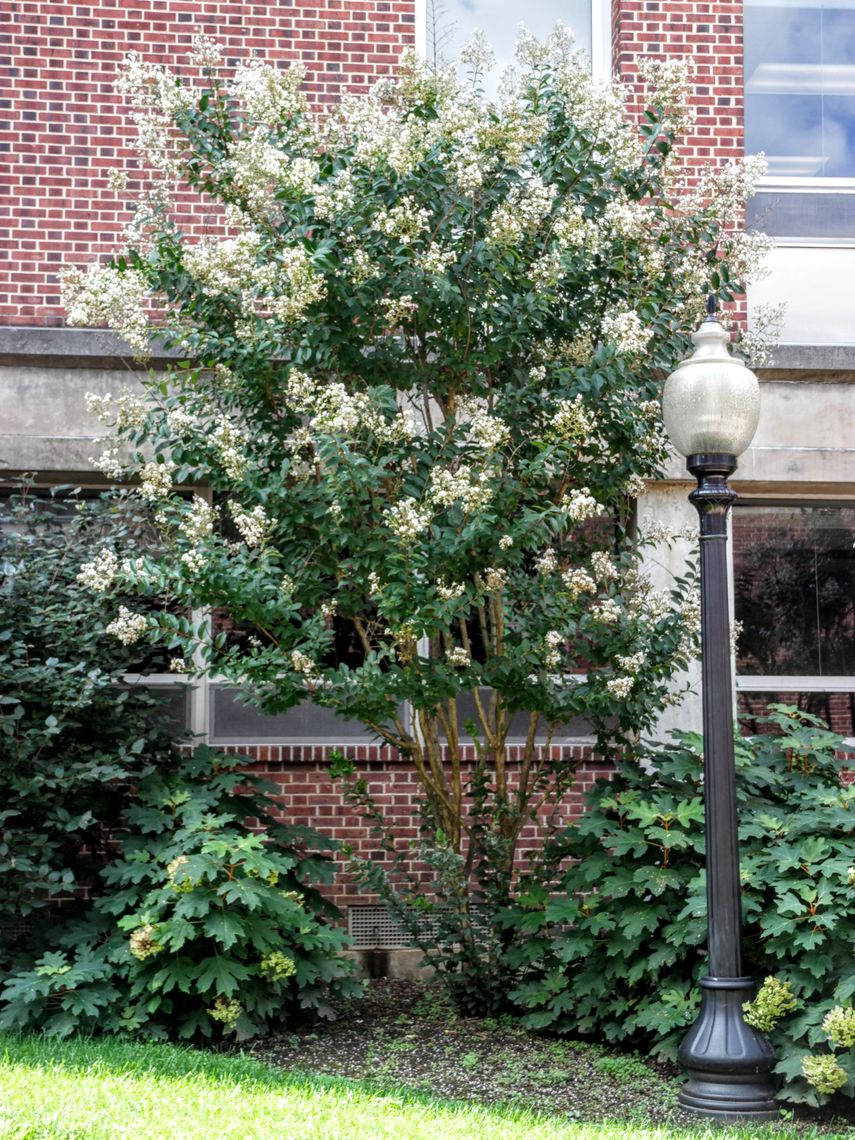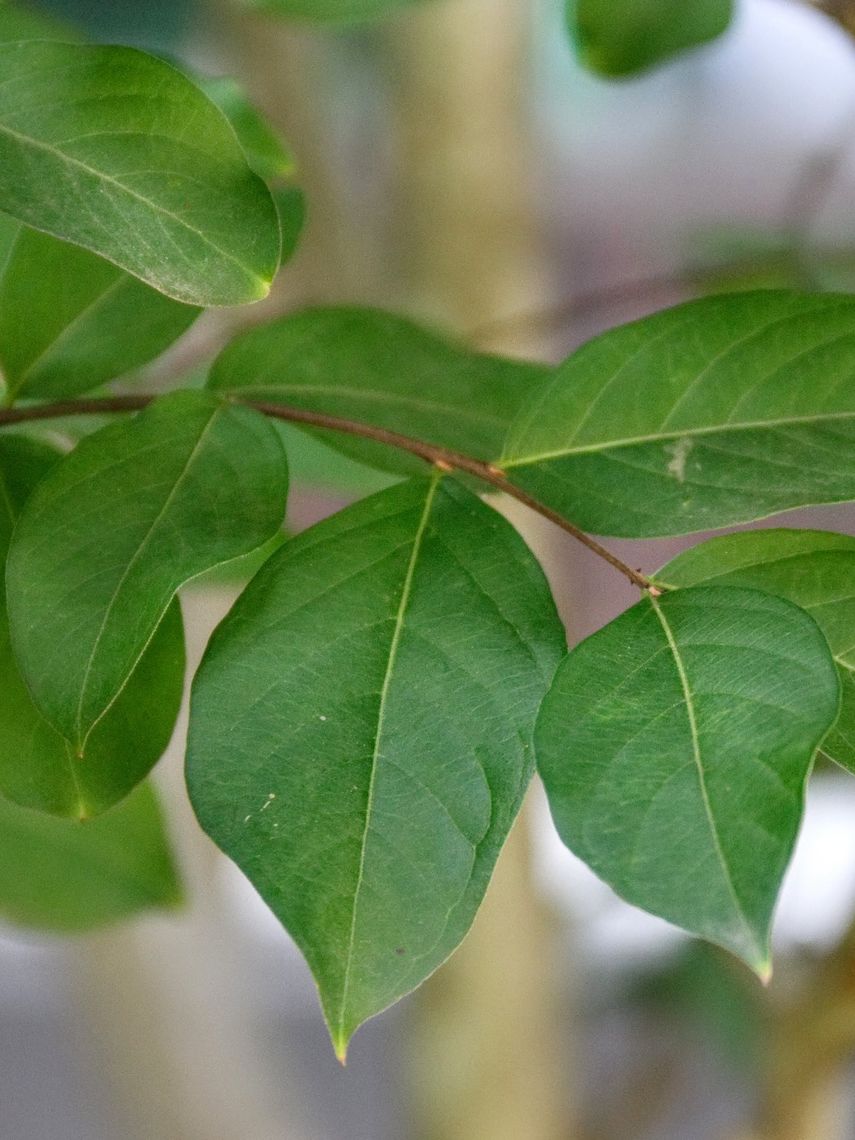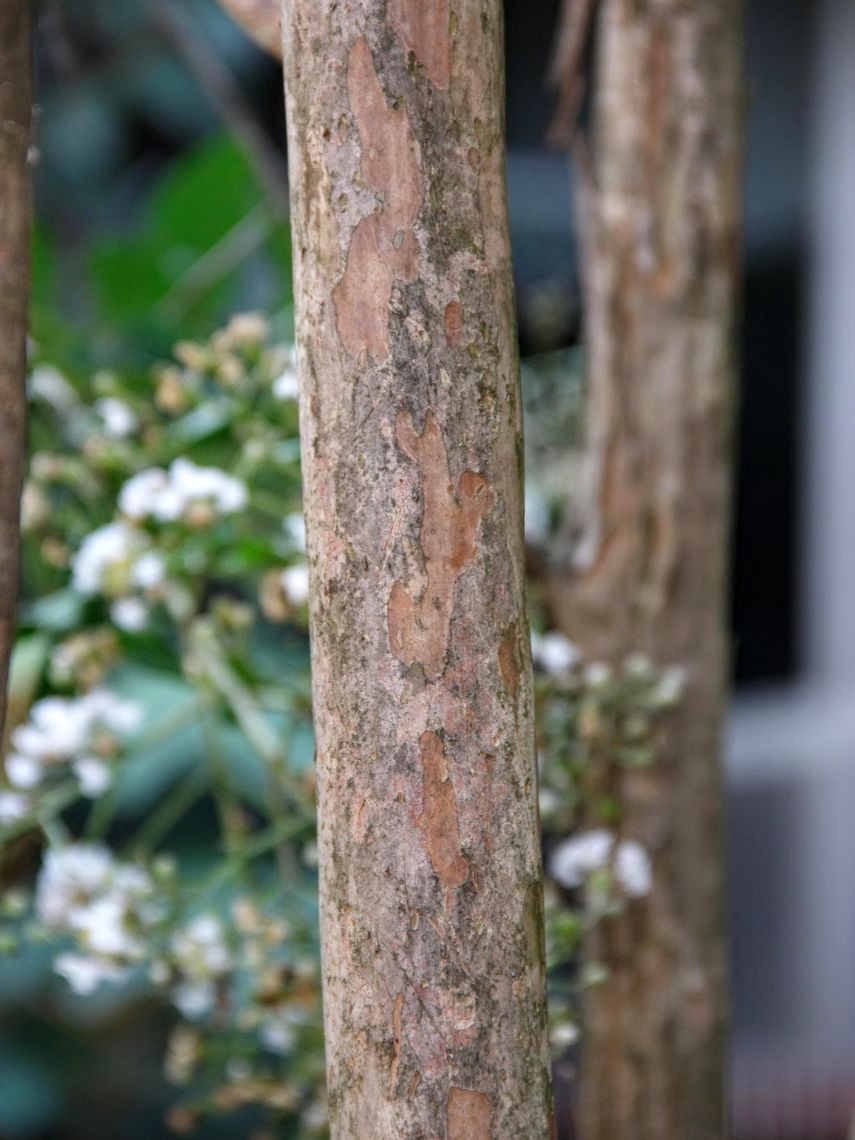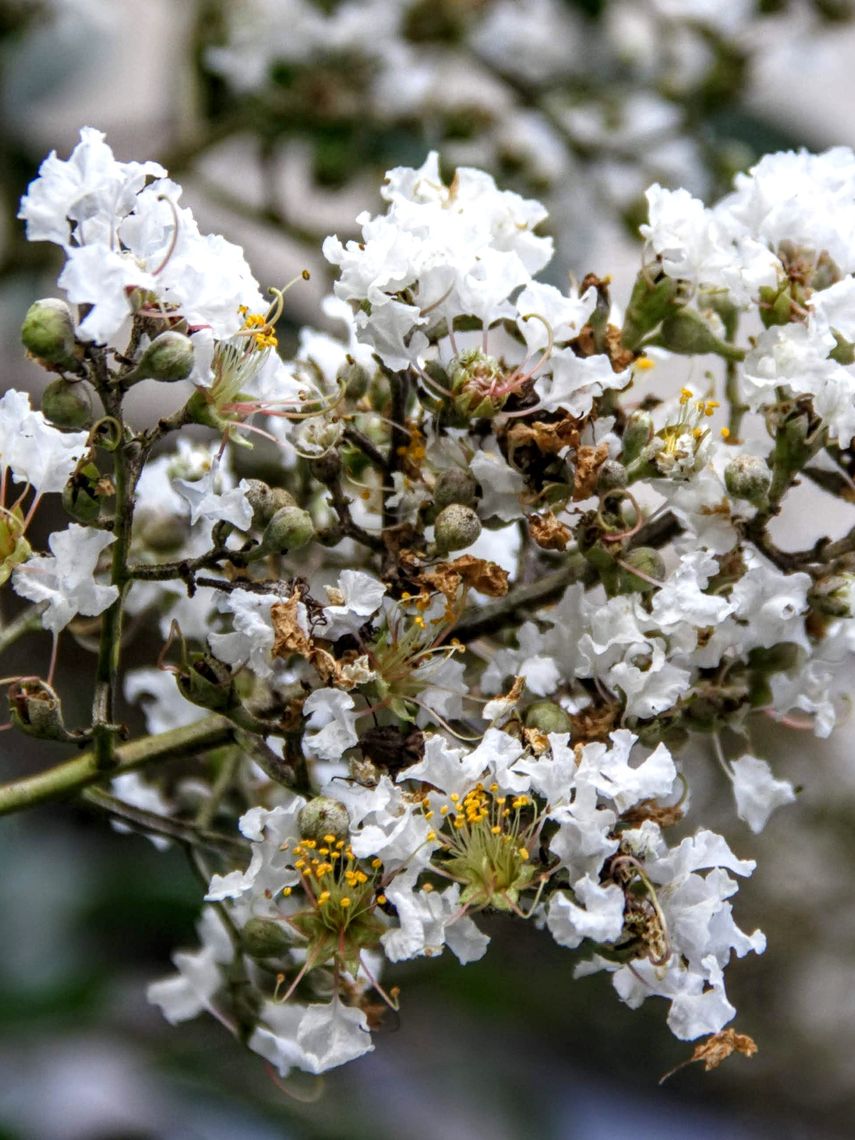Crape Myrtle (Lagerstroemia sp)
In the crape myrtle's long bloom period, it shows off its large clusters of papery, crimped-petaled flowers. In the wild, these flowers are usually red, though cultivated varieties of the tree can also produce white, pink, mauve, and purple flowers. This tree also has interesting, gray-pink, exfoliating bark, and thick, leathery, oval-shaped leaves, which turn spectacular shades of red, orange, and yellow in the fall. This tree attracts birds and insect pollinators.
Family: Lythraceae (loosestrife)
Characteristics: The 3-inch-long leaves are elliptic to oblong, thick, leathery, and dark green. New leaves are light green with a tint of red. In the fall, leaves turn shades of yellow, orange, and red. In the summer, 6-inch to 18-inch-long clusters of papery, crimped-petaled flowers begin to bloom. In the wild, these flowers are usually red, though cultivated varieties will also produce white, pink, mauve, and purple flowers. These flowers give way to round seed capsules, which will often remain on the tree throughout the winter. Bark is smooth, pink-gray, and exfoliates with age. This tree is wide-spreading, multi-stemmed, and has upright branches. It may grow as a large shrub or small tree. This tree grows 15-25 feet high and 6-20 feet wide.
Foliage: Deciduous (leaves lost seasonally)
Geographic Origin: China, Himalayas, Japan (non-native)
Cultivation Notes: Requires medium maintenance. Does best in full sun. Prefers moist and well-drained soils, though also does well in clay soils. Over fertile soils may cause this species to produce a dense amount of leaves, but fewer flowers. It may also increase its susceptibility to winter injury.
Number on Campus: 3
Sources: Dirr, Morton Arboretum, Missouri Botanical Garden




